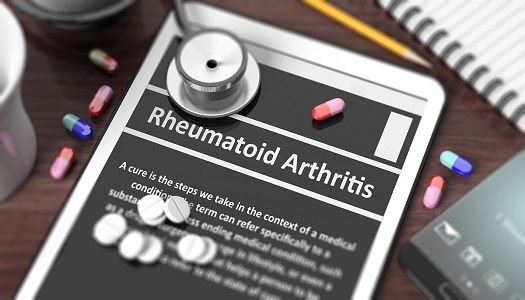Choosing a Rheumatoid Arthritis Treatment Could Become Easier with These Biomarkers
Treg and Breg cells can be very telling for rheumatoid arthritis treatment.

A preliminary investigation indicated that phenotyping Treg (T) and Breg (B) cells could be beneficial in choosing the best biologic drug to treat rheumatoid arthritis (RA).
Although the development of immunotherapies has led to targeted treatment strategies and, ultimately, better outcomes for many patients with RA, an estimated 30% of patients experience either non-response or insufficient response to biologic drugs. In order to help that population, researchers are searching for biomarkers that may indicate response to these drugs. Such biomarkers would help clinicians choose the most efficient treatment for each patient while also avoiding the inherent dangers of using drugs that are not effective. A team from Amiens University Hospital at the University of Picardie-Jules Verne in France set out to identify potential biomarkers.
Previous studies have shown that lymphocyte subpopulations are important in the physiopathology of RA, including regulatory T cells, regulatory B lymphocytes, as well as T helper cells (Th17), and CD4+ T-lymphocytes. In this French study, researchers were aiming “to describe the different lymphocyte subpopulation frequencies in RA (regulatory B and T cells and Th17 lymphocytes) before and under biologic drugs, in order to test the correlation with subsequent response to the drug received,” in addition to identifying potential biomarkers that could predict those responses.
The researchers recruited 31 patients with RA and 17 control subjects between November 2014 and October 2015. All participants were monitored at one (M1), three (M3), and six (M6) months after treatment. A total of five patients left during the study.
The researchers compared the lymphocyte subpopulations before patients received biologic drugs and found an association between rheumatoid factor (RF) and lower absolute numbers of T2/Breg. They also looked for a potential correlation between T2/Breg, Treg, and Th17 frequencies at different times during the treatment. Additionally, the investigators examined what happened to the lymphocyte subpopulations depending on the type of treatment.
The findings indicated that Treg frequencies decreased in patients receiving abatacept, which the researchers described as an anti-costimulation treatment. However, that the frequencies of Treg increased when patients were receiving anti-tumor necrosis factor (TNF) treatments. In controls, “there was a trend toward correlation between the absolute number of Treg and T2/Breg and between Treg and Th17 cells.”
The authors stressed that the current study was a pilot study, and that the results need to be confirmed on a wider scale, however, they said, “If validated, our data would suggest the prescribing of abatacept if the patient has high baseline levels of CD24hiCD27+ B cells, whereas a low initial level of Th17 cells may guide the choice of an anti-cytokine.”
The study, “Th17 and CD24hiCD27+ regulatory B lymphocytes are biomarkers of response to biologics in rheumatoid arthritis,” was published in Arthritis Research & Therapy.
Related Coverage:
Is Rheumatoid Arthritis Really on the Decline?
Mom’s Rheumatoid Arthritis Increases Child’s Epilepsy Risk
Rheumatology Community Calls for Collaboration to Fight Arthritis Comorbidities